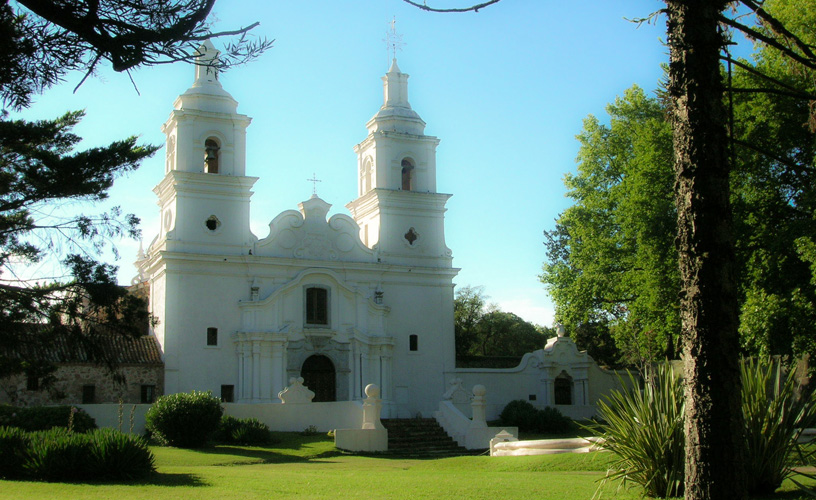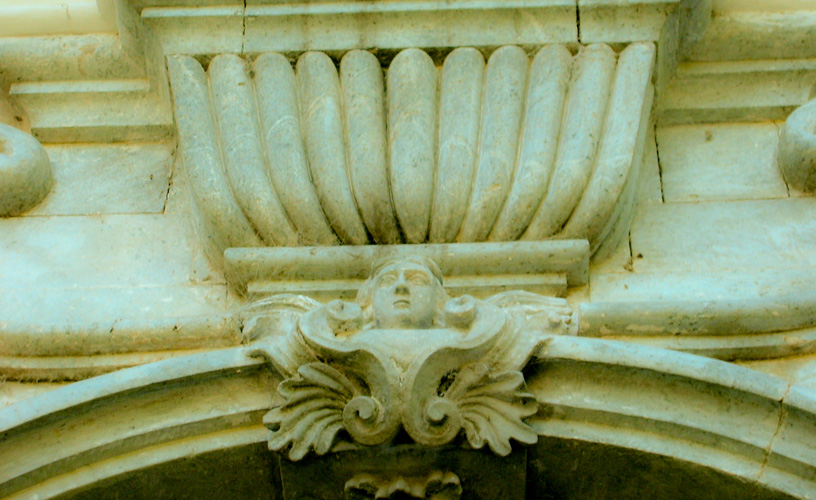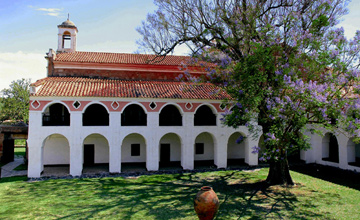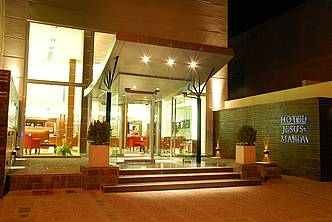The largest of all Jesuit estancias, Santa Catalina was founded in 1622.
We were heading north towards Ascochinga, always following National Route 9, this time 70 kilometers away from the City of Córdoba Capital, and 20 kilometers to the northwest of Jesús María. A secondary road is taken at this spot. It was at that spot where we started a new journey back in time.
In the old lands of Calabalumba la Vieja, within the present territory of the Province of Córdoba, the Company of Jesus bought the estancia known as Santa Catalina for four thousand and five hundred Pesos. Back then, the venue included some primitive constructions and many cattle heads.
As a result of the scarce water, the first great works done by the Jesuits was a set of underground pipes that carried the water coming to the estate from Ongamira, located several kilometers away, in the mountains. This water was stored in a large pond. Thus, Santa Catalina became the great center of cattle raising with thousands of cow, sheep and mule heads. Besides, items were woven in the loom, and tack was produced, as well as blacksmith and carpentry works. There also were two mills.
Estancia Jesuítica Santa Catalina
But beyond this huge productive undertaking, Santa Catalina is widely known for its church, featuring the typical Argentinian colonial Baroque style, visibly influenced by Central European architecture of the same style.
Over once century after acquiring this estancia in 1754, the Jesuit missionaries finished the church works.
Its imposing façade, lined by two towers and a curved portal, boasts slender lines and ornaments, with curved pediments and pilasters. Inside, the harmony of proportions is fascinating. Only one nave in the shape of a Latin cross ends in the circular dome with windows on the vault. The great altarpiece of the main altar has been carved in wood and gold. A piece of canvas representing the patron saint of the estancia, a dressed image of the Lord of Humbleness and Patience as well as the polychrome carved image of crucified Christ stand out.
Excuse me, May I Come in?
After the order was expelled, Francisco Antonio Díaz acquired estancia Santa Catalina at an auction encouraged by Estancia de Santa Catalina Junta de Temporalidades. It remained in the family for four generations.
Although it was declared National Historical Museum in 1941, it is necessary to ask for permission before entering its ancestral yards and tour around the venue, as it is dwelled by its owners. Lili is the faithful caretaker of the sanctuary and she escorts visitors around the altar, the altarpiece and the sacristy. What used to be the quarters of natives and slaves have been turned into a typical pulpería where visitors may enjoy a meal amid handicrafts and antiques.
Anytime is good to tour around the estancia. However, the patron saint festivals are held on November 25 or the last Sunday in January, when Santa Catalina is invaded by celebration, rites and tradition.
Pablo Etchevers
Marcelo Sola













